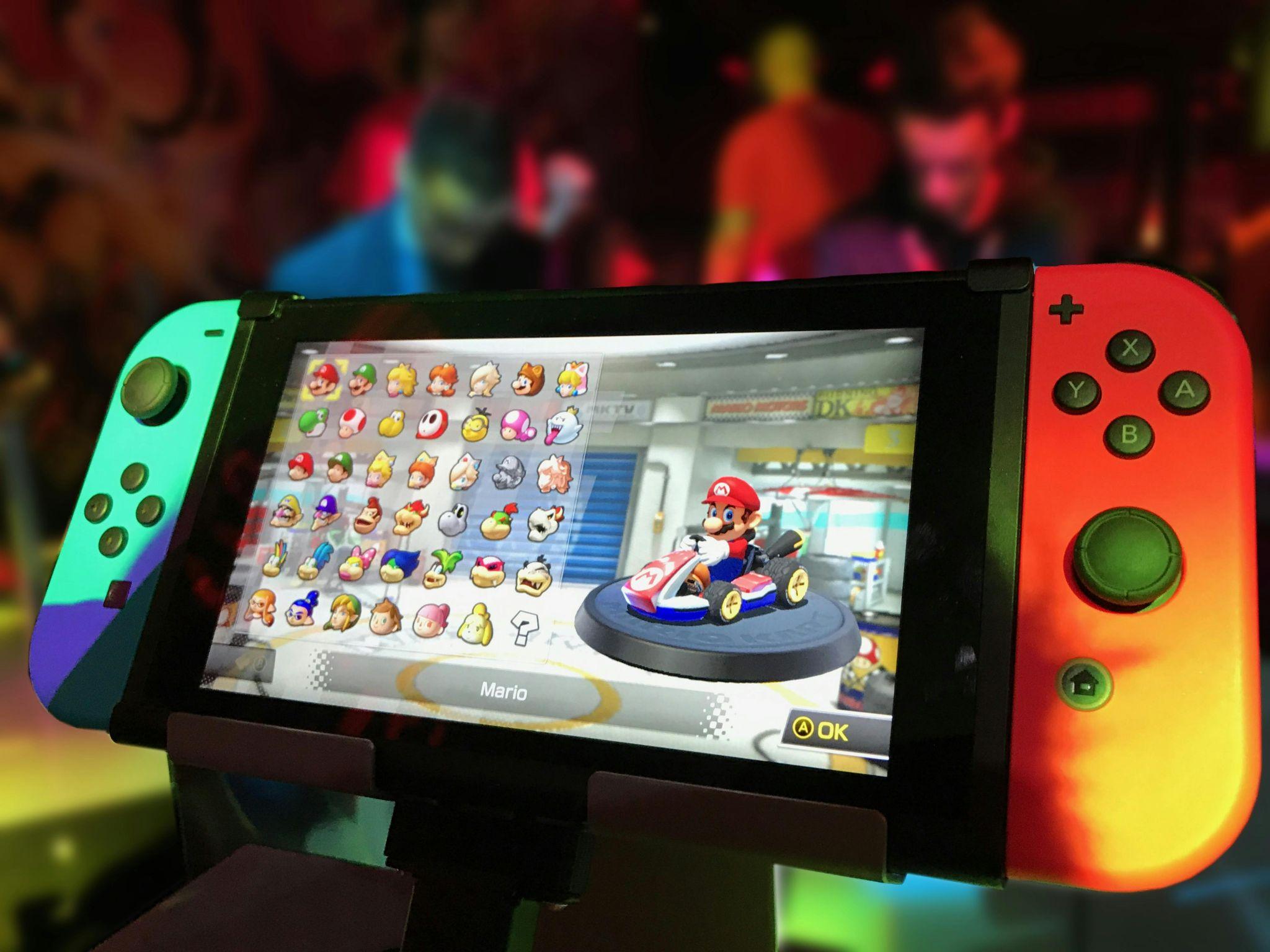
The Psychology of Game Design: What Makes a Game Addictive?
Iren
- 0
- 445
The Psychology of Game Design represents a complex intersection of neuroscience, behavioral psychology, and interactive entertainment that fundamentally shapes how players engage with digital experiences. Understanding What Makes a Game Addictive has become crucial for both game designers seeking to create compelling experiences and players who want to maintain healthy gaming habits. This psychological framework reveals how seemingly simple design choices can trigger powerful neurochemical responses that keep players engaged for hours, days, or even years.
Core Reward Systems Driving Player Engagement
The foundation of addictive game design lies in sophisticated reward systems that manipulate the brain’s natural dopamine pathways. These systems create powerful feedback loops that encourage repeated play through carefully calibrated dispensation of rewards, achievements, and progression markers. Game designers leverage decades of behavioral psychology research to create experiences that feel simultaneously satisfying and incomplete, driving players to continue pursuing the next reward.
| Reward Type | Delivery Pattern | Psychological Impact | Example |
|---|---|---|---|
| Fixed Ratio | Predictable intervals | Moderate engagement, predictable satisfaction | Daily login bonuses |
| Variable Ratio | Random intervals | High engagement, strongest addiction potential | Loot boxes, critical hits |
| Near-miss | Almost achieving reward | Increased motivation, frustration tolerance | Slot machine mechanics, gacha pulls |
Dopamine-driven Feedback Loops
The neurochemical foundation of game addiction centers around dopamine release patterns that mirror those found in gambling and substance abuse. Unlike the common misconception that dopamine represents pleasure itself, this neurotransmitter actually signals the anticipation of reward, creating powerful motivation to continue engaging with reward-producing activities.
- Anticipation peaks occur during loading screens, opening chests, or awaiting match results
- Variable reward schedules create stronger dopamine responses than predictable rewards
- Near-miss experiences paradoxically increase motivation despite representing failure
- Social validation through achievements amplifies dopamine release through peer recognition
- Progress indicators maintain engagement by suggesting rewards are “just around the corner”
Compulsion Loops & Variable Ratio Rewards
Compulsion loops represent the cyclical nature of game engagement, where completing one action immediately presents the next compelling objective. These loops become particularly powerful when combined with variable ratio reward schedules, which deliver unpredictable rewards that create the strongest behavioral conditioning patterns known to psychology.
- Skinner box mechanics appear in daily quests, random drops, and gacha systems
- Slot machine psychology influences loot box opening ceremonies and critical hit animations
- “Just one more” mentality emerges from perfectly timed reward dispensation
- Loss aversion keeps players engaged to avoid losing streaks or daily bonuses
- Sunk cost fallacy prevents players from stopping after significant time investment
Flow State & Skill-Challenge Balance
The concept of flow state, pioneered by psychologist Mihaly Csikszentmihalyi, describes the optimal psychological condition where players become fully immersed in activities that perfectly balance challenge with skill level. Games that successfully maintain this delicate equilibrium create experiences so engaging that players lose track of time and external concerns.
Csikszentmihalyi identified several prerequisites for achieving flow state:
- Clear goals with immediate feedback
- Balance between challenge and skill level
- Merging of action and awareness
- Total concentration on the task
- Loss of self-consciousness
- Transformation of time perception
Maintaining Flow Through Dynamic Difficulty
Dynamic difficulty adjustment represents one of the most sophisticated methods for maintaining optimal challenge levels throughout gameplay experiences. This approach prevents both boredom from excessive ease and frustration from overwhelming difficulty by continuously calibrating challenge to match player skill development.
- Adaptive AI systems modify enemy behavior based on player performance
- Rubber band mechanics in racing games keep competitions close regardless of skill gaps
- Difficulty curves gradually introduce new mechanics without overwhelming players
- Player analytics inform real-time adjustments to maintain engagement
- Personalized challenge scaling accounts for individual learning rates and play styles
Social Mechanics & Peer Influence

The integration of social elements transforms solitary gaming experiences into community-driven activities that leverage fundamental human needs for connection, status, and belonging. These mechanics increase player retention by creating social obligations and emotional investments that extend beyond the game itself.
Social engagement triggers include:
- Status displays through leaderboards, achievements, and cosmetic items
- Peer pressure from guild requirements and group activities
- Fear of missing out on limited-time social events
- Social proof through friend activity feeds and recommendations
- Collaborative goals that require sustained group participation
Leaderboards, Competition, and Cooperation
Competitive elements tap into deep-seated human drives for status and recognition while cooperative mechanics satisfy needs for belonging and shared achievement. The psychological impact of seeing one’s name on leaderboards or contributing to team victories creates powerful emotional hooks that encourage continued participation.
- Social comparison theory drives engagement through relative performance metrics
- Competitive motivation emerges from ranked systems and tournaments
- Cooperative satisfaction develops through shared goals and mutual dependence
- Status anxiety prevents players from falling behind peers in progression
- Achievement visibility amplifies motivation through public recognition
Social Obligations & Group Dynamics
Guild systems and cooperative gameplay create social contracts that extend beyond individual entertainment preferences. Players continue engaging not just for personal enjoyment but to fulfill obligations to teammates and maintain social standing within gaming communities.
- Scheduled group activities create appointment gaming that overrides other commitments
- Interdependence mechanics make individual players feel responsible for group success
- Social pressure from guild leaders and teammates maintains consistent participation
- Community investment develops through shared experiences and relationship building
- Exclusion anxiety motivates continued engagement to avoid losing social connections
Progression, Mastery & Goal Setting
Progression systems satisfy fundamental psychological needs for growth, achievement, and mastery while providing clear frameworks for measuring advancement. These systems create hierarchical goal structures that maintain long-term engagement through carefully paced rewards and milestone celebrations.
| Progression Model | Structure | Psychological Appeal | Retention Strategy |
|---|---|---|---|
| Linear Leveling | Sequential advancement | Clear progress visualization | Steady reward distribution |
| Branching Skill Trees | Multiple development paths | Autonomy and customization | Replayability through different builds |
| Seasonal Battle Passes | Time-limited progression | Urgency and exclusivity | Fear of missing out |
| Prestige Systems | Multi-layered advancement | Long-term mastery goals | Extended engagement cycles |
Unlockable Content and Achievements
Achievement systems leverage the psychological satisfaction of completing clearly defined objectives while unlockable content provides tangible rewards for sustained engagement. These mechanisms create structured progression pathways that transform abstract play time into concrete accomplishments.
- Completion satisfaction triggers endorphin release through goal achievement
- Collection mechanics appeal to completionist tendencies and systematic thinking
- Rare unlocks create status symbols that demonstrate dedication and skill
- Progressive disclosure maintains curiosity by revealing new content gradually
- Meta-achievements provide additional goals for dedicated players
Clear Goals and Milestone Structures
Effective goal setting in games follows established psychological principles that maximize motivation through clear objectives, appropriate difficulty scaling, and meaningful rewards. The structure of these goals significantly impacts player engagement and retention rates.
- Immediate objectives provide short-term motivation and quick satisfaction
- Medium-term goals maintain engagement through weekly or monthly targets
- Long-term aspirations create sustained investment in character development
- Optional challenges cater to different player motivations and skill levels
- Nested goal hierarchies allow simultaneous progress on multiple objectives
Emotional Hooks: Narrative & Aesthetic Appeal

The emotional dimension of game design creates powerful psychological connections that transcend mechanical engagement. Through compelling narratives, aesthetic beauty, and sensory polish, games tap into fundamental human needs for meaning, beauty, and emotional expression.
Emotional engagement triggers include:
- Character identification through relatable protagonists and personal choice
- Narrative investment in story outcomes and character relationships
- Aesthetic appreciation of visual design, music, and environmental storytelling
- Emotional catharsis through dramatic moments and resolution
- Personal expression via customization and creative elements
Storytelling Engagement and Character Attachment
Narrative elements create emotional investment that motivates continued engagement beyond mechanical rewards. Players develop genuine care for characters and story outcomes, creating psychological investment that encourages completion and exploration.
- Character development arcs create emotional bonds through shared experiences
- Player agency in story decisions increases personal investment in outcomes
- Cliffhanger mechanics maintain curiosity about narrative resolution
- Emotional peaks through dramatic storytelling create memorable experiences
- Personal relevance connects game themes to player experiences and values
Sensory Design: Audio, Visuals, and “Juiciness”
Sensory polish significantly impacts player engagement through what designers call “game juice“—the accumulation of small aesthetic details that make interactions feel satisfying and responsive. This attention to sensory feedback creates subconscious positive associations with gameplay actions.
- Visual feedback through particle effects, screen shake, and animation polish
- Audio cues that provide satisfying confirmation of player actions
- Haptic feedback in mobile and console games that adds physical sensation
- UI responsiveness that makes interface interactions feel immediate and precise
- Aesthetic consistency that creates cohesive and immersive game worlds
Dark Patterns & Ethical Boundaries
The line between engaging design and manipulative practices has become increasingly blurred as games incorporate psychological techniques originally developed for gambling and addiction treatment. Understanding these dark patterns is crucial for both designers and players to maintain ethical boundaries in game development.
| Dark Pattern | Mechanism | Psychological Exploitation | Potential Harm |
|---|---|---|---|
| Pay-to-Win | Monetary shortcuts | Frustration and impatience | Financial exploitation |
| Artificial Scarcity | Limited-time offers | Fear of missing out | Impulse purchasing |
| Grinding Gates | Time-consuming requirements | Patience exhaustion | Time manipulation |
| Social Pressure | Friend requests and sharing | Peer influence | Relationship commodification |
Loot Boxes, Gacha Mechanics & Monetization Psychology
Loot box systems represent the most controversial intersection of game design and gambling psychology, utilizing variable reward schedules and near-miss mechanics to encourage repeated purchases. Research from the University of British Columbia has demonstrated clear parallels between loot box engagement and problem gambling behaviors.
- Gambling parallels in random reward mechanics and purchase-based progression
- Whale targeting through systems designed to extract maximum revenue from vulnerable players
- Sunk cost exploitation that encourages continued spending to justify previous purchases
- Social pressure through pay-to-win mechanics and cosmetic status symbols
- Addiction vulnerability particularly affecting individuals with existing gambling tendencies
Ethical Design Principles
Responsible game design requires balancing player engagement with respect for player wellbeing and autonomy. Ethical guidelines help developers create compelling experiences without exploiting psychological vulnerabilities or encouraging harmful behaviors.
- Transparent mechanics that clearly communicate odds, costs, and progression requirements
- Player control features including spending limits, time tracking, and break reminders
- Fair monetization that doesn’t create pay-to-win advantages or exploit impatience
- Vulnerability protection through safeguards for minors and at-risk individuals
- Long-term wellbeing consideration in design decisions and feature implementation
Individual Differences & Vulnerability Factors
Not all players respond equally to addictive game design elements, with individual differences in personality, life circumstances, and psychological makeup significantly influencing susceptibility to problematic gaming behaviors. Understanding these vulnerability factors helps both designers and players recognize when engagement crosses into unhealthy territory.
Risk factors for gaming addiction include:
- Sensation-seeking personality traits that crave intense stimulation
- Social isolation that makes online communities particularly appealing
- Depression or anxiety that games temporarily alleviate through escapism
- Low self-esteem addressed through in-game achievements and status
- Impulse control difficulties that make reward-based systems particularly compelling
Personal Traits That Affect Susceptibility
Personality psychology research has identified specific traits that correlate with increased vulnerability to gaming addiction. These characteristics don’t guarantee problematic behavior but indicate increased risk that designers and players should acknowledge.
- High neuroticism correlates with using games for emotional regulation
- Introversion may increase preference for online social interaction over face-to-face connection
- Openness to experience can lead to extensive exploration of game content and mechanics
- Low conscientiousness may manifest as difficulty managing gaming time and priorities
- Agreeableness can increase susceptibility to social pressure within gaming communities
Recognizing and Mitigating Unhealthy Habits
Healthy gaming practices require both individual awareness and supportive design features that help players maintain balance. Recognition of problematic patterns allows for early intervention before gaming significantly impacts other life areas.
- Time awareness tools that track and display actual play duration
- Natural stopping points designed into gameplay to facilitate breaks
- Real-world connection features that encourage offline social interaction
- Goal reflection prompts that help players evaluate their gaming motivations
- Professional resources and support systems for individuals struggling with gaming addiction
Conclusion
The Psychology of Game Design reveals how sophisticated understanding of human motivation, cognition, and emotion creates digital experiences capable of capturing sustained attention and emotional investment. What Makes a Game Addictive encompasses neurochemical reward systems, social dynamics, progression mechanics, and emotional engagement techniques that collectively satisfy fundamental psychological needs while sometimes exploiting cognitive vulnerabilities.
The most engaging games successfully balance challenge with skill development, provide meaningful social connections, offer clear progression pathways, and create emotional investment through narrative and aesthetic appeal. However, the power of these psychological techniques carries ethical responsibilities for designers to prioritize player wellbeing alongside engagement metrics.
As the gaming industry continues evolving, the distinction between healthy engagement and manipulative exploitation becomes increasingly important. Thoughtful game creation requires understanding not just what makes players want to continue playing, but also what allows them to maintain healthy relationships with gaming as one element of balanced, fulfilling lives. The future of game design lies in harnessing psychological insights to create experiences that enrich rather than exploit the human desire for play, achievement, and connection.



